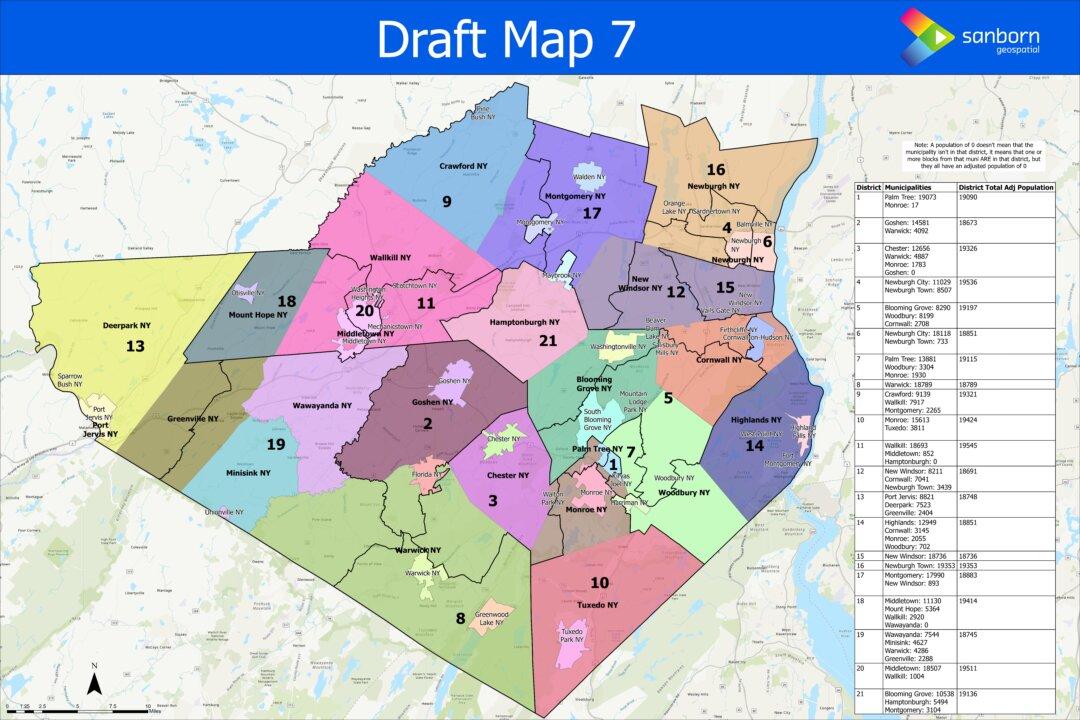Orange County residents can comment in person on a draft county legislative district map at the county government center in Goshen between 5 p.m. and 9 p.m. on Aug. 27.
The draft map was approved for public review last week by the Legislature after four earlier versions were shot down; it has been a bumpy redistricting journey complicated by sharp population growth in a few pockets and tightened state reapportionment laws.





